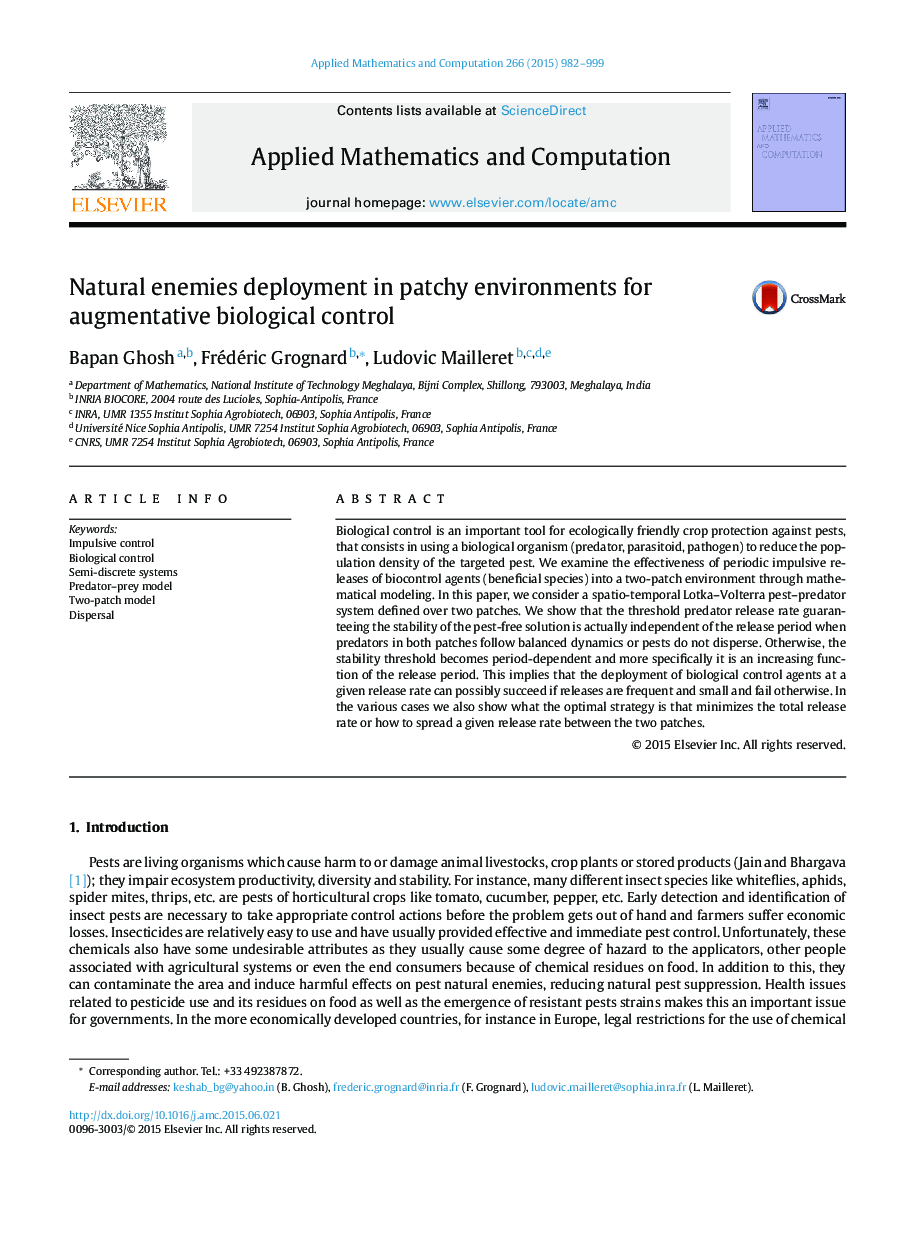| Article ID | Journal | Published Year | Pages | File Type |
|---|---|---|---|---|
| 4626573 | Applied Mathematics and Computation | 2015 | 18 Pages |
Abstract
Biological control is an important tool for ecologically friendly crop protection against pests, that consists in using a biological organism (predator, parasitoid, pathogen) to reduce the population density of the targeted pest. We examine the effectiveness of periodic impulsive releases of biocontrol agents (beneficial species) into a two-patch environment through mathematical modeling. In this paper, we consider a spatio-temporal Lotka-Volterra pest-predator system defined over two patches. We show that the threshold predator release rate guaranteeing the stability of the pest-free solution is actually independent of the release period when predators in both patches follow balanced dynamics or pests do not disperse. Otherwise, the stability threshold becomes period-dependent and more specifically it is an increasing function of the release period. This implies that the deployment of biological control agents at a given release rate can possibly succeed if releases are frequent and small and fail otherwise. In the various cases we also show what the optimal strategy is that minimizes the total release rate or how to spread a given release rate between the two patches.
Related Topics
Physical Sciences and Engineering
Mathematics
Applied Mathematics
Authors
Bapan Ghosh, Frédéric Grognard, Ludovic Mailleret,
